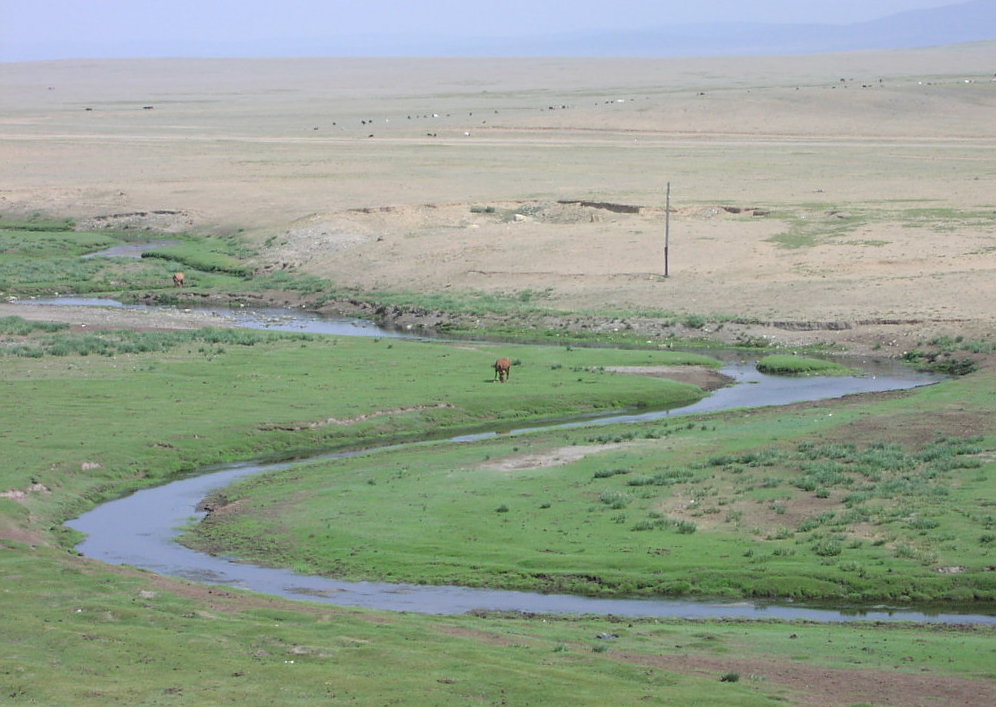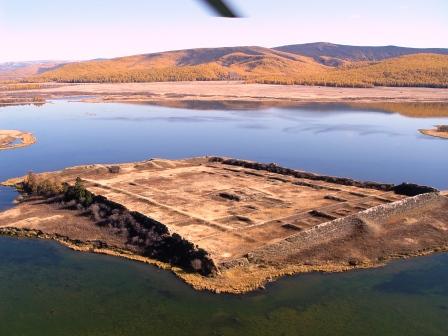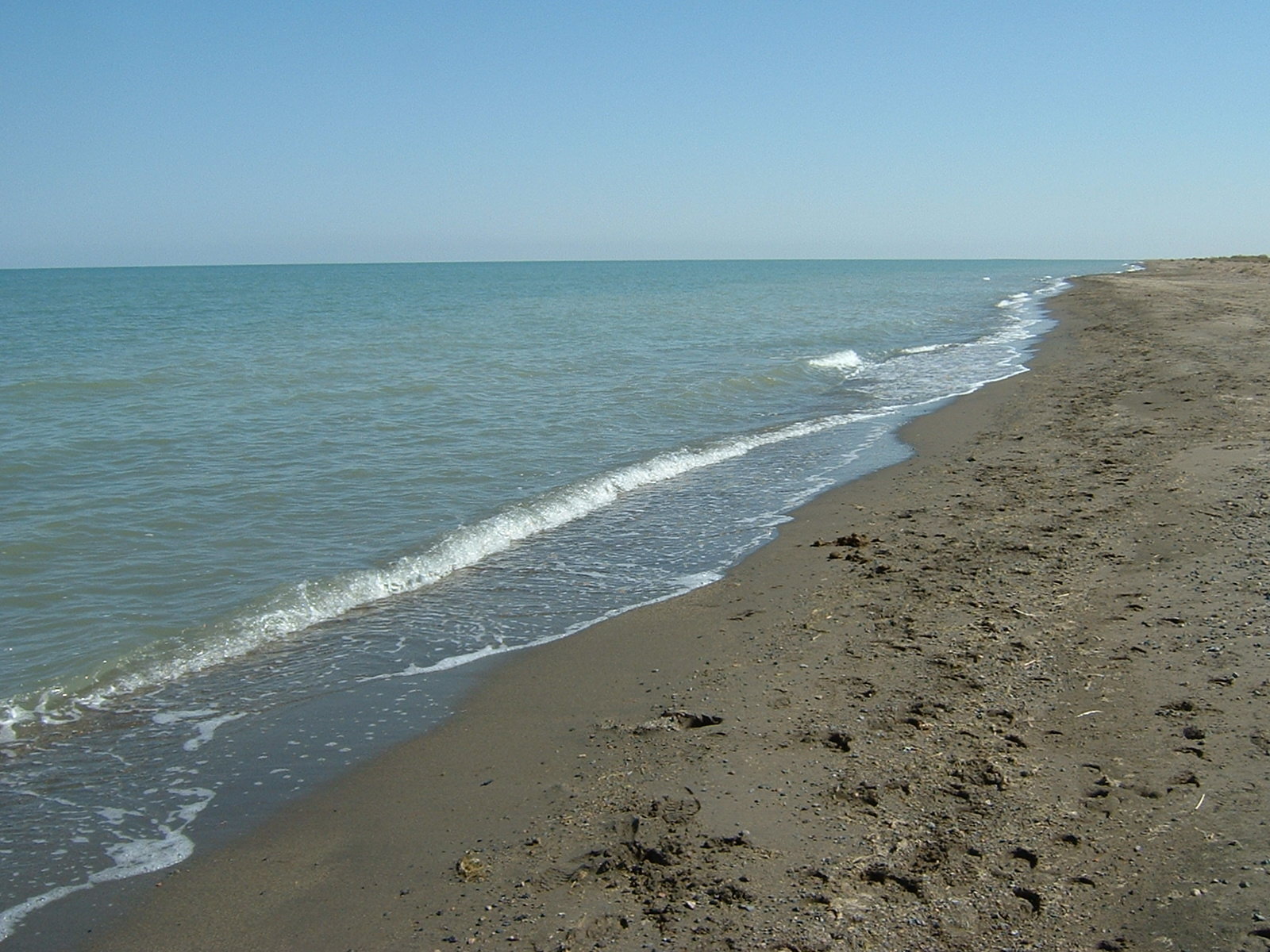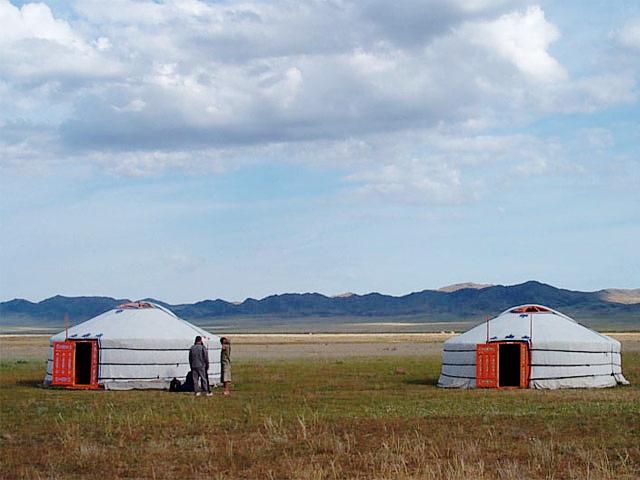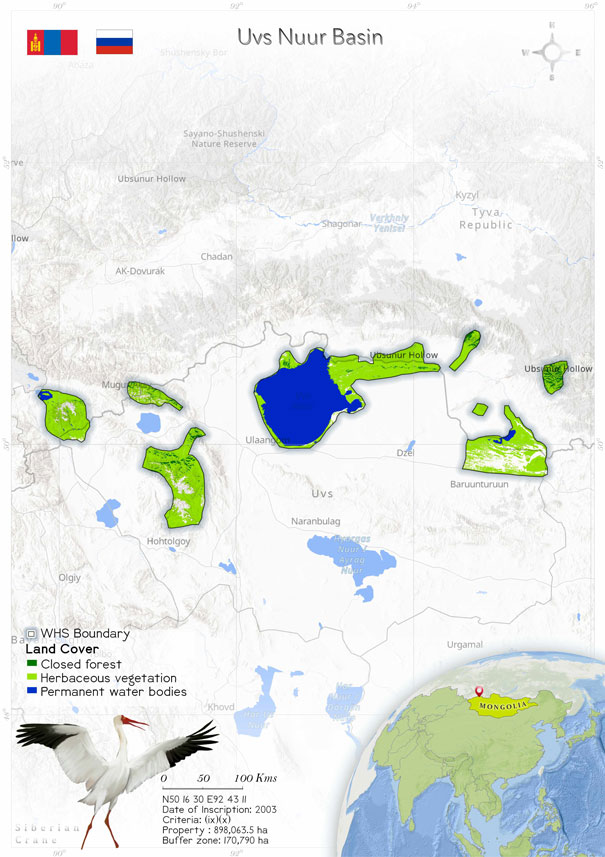
Uvs Nuur Basin (769)
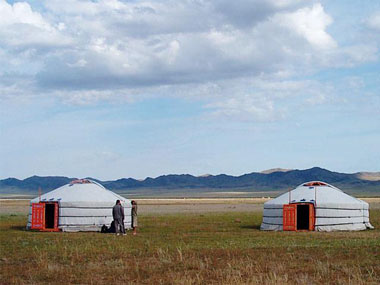 Uvs Nuur Basin is inscribed as World Heritage Site in 2003 under criteria ix and x. It is a transnational property present in Mongolia and Tuva, a republic of the Russian Federation. The total surface area of this property is 898,064 ha, in which almost half of the property lies in Mongolia, and rest in Russia. Present in central Asia, it includes important biomes which have very complex and vast ecosystems varying from the cold desert, desert-steppe, steppe, taiga, salt marshes, snowfields, tundra, alpine tundra, boreal, deciduous, and floodplain forests. It has its significance because of the rich biodiversity it supports and is of main attraction because of an excellent range of birds, harbors, and rare species like snow leopard and argali sheep can also be found. The cultural heritage depicts the long history of Paleolithic times with evidence of many historical artifacts. The place has been a center of nomadic occupation for a long; it can be proved from burial mounds (kurgans), carved stone steles, and rock drawing in the southern part of Yamaalig massif. There are still many proofs of traditional nomadic lifestyle which are undisturbed by the present development. There are also signs of the latest Buddhist monasteries and the military. With the help of legislative environmental and some financing, the government of Mongolia and Russia are working as a pillar for the conservation of the site. Considering this, all the site is under the category of "good with some concerns" according to the IUCN world heritage Outlook.
Uvs Nuur Basin is inscribed as World Heritage Site in 2003 under criteria ix and x. It is a transnational property present in Mongolia and Tuva, a republic of the Russian Federation. The total surface area of this property is 898,064 ha, in which almost half of the property lies in Mongolia, and rest in Russia. Present in central Asia, it includes important biomes which have very complex and vast ecosystems varying from the cold desert, desert-steppe, steppe, taiga, salt marshes, snowfields, tundra, alpine tundra, boreal, deciduous, and floodplain forests. It has its significance because of the rich biodiversity it supports and is of main attraction because of an excellent range of birds, harbors, and rare species like snow leopard and argali sheep can also be found. The cultural heritage depicts the long history of Paleolithic times with evidence of many historical artifacts. The place has been a center of nomadic occupation for a long; it can be proved from burial mounds (kurgans), carved stone steles, and rock drawing in the southern part of Yamaalig massif. There are still many proofs of traditional nomadic lifestyle which are undisturbed by the present development. There are also signs of the latest Buddhist monasteries and the military. With the help of legislative environmental and some financing, the government of Mongolia and Russia are working as a pillar for the conservation of the site. Considering this, all the site is under the category of "good with some concerns" according to the IUCN world heritage Outlook.
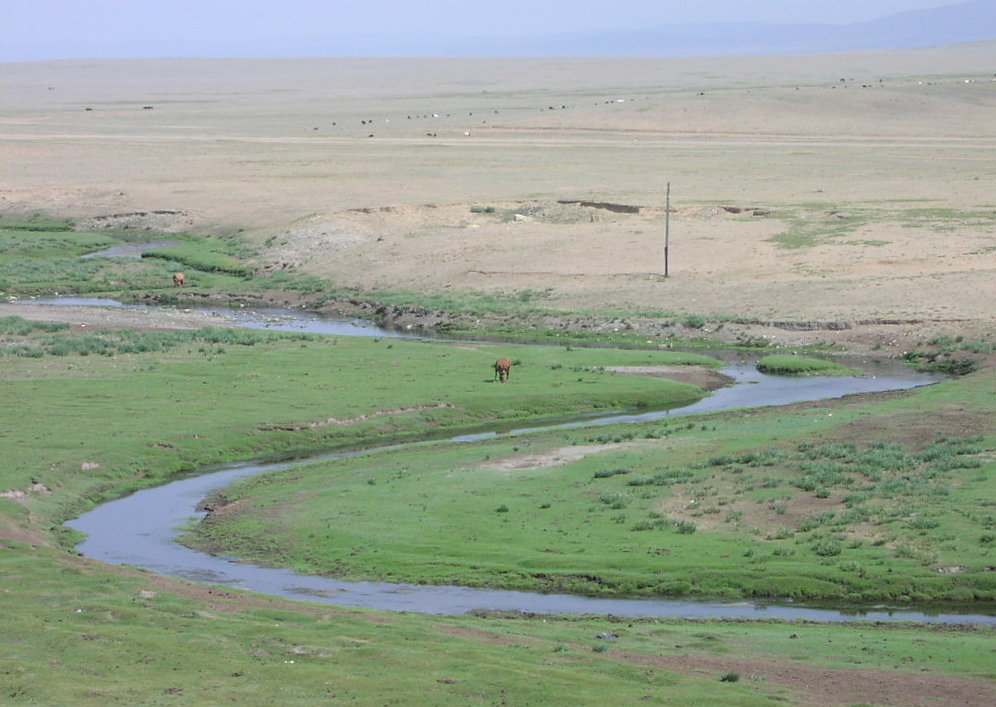 Falling under the transboundary category of world heritage site Uvs Lake Basin (50º10’N 93º50’E) is a Natural world heritage site shared between Mongolia and Tuva (a republic of the Russian Federation). Situated in the heart of Asia, this property is named after Uvs Nuur Lake, a vast, shallow, and very saline lake located in an arid high-altitude and holds its importance because of migratory birds' waterfowl and seabirds (UNESCO whc.unesco.org). It is located in the vicinity of the Tannu Ulu Mountains with the Baruun Tagnyn Nuruu in the northwest, by the Kharkhiraa in the West at 4000-m-high, and the 2300-m-high Khan KhoK hiyn Nuruu range in the south (Grunert et al. 2000). The property is a serial WHS consists of important biomes of eastern Eurasia, which have twelve protected areas, seven are in Mongolia, and five are in Tuva (UNESCO, whc.unesco.org). The Uvs Nur lake, situated in Western Mongolia, also known as the Valley of Great Lakes (Yapiyev et al. 2017), is the largest lake in the protected area. The second largest lake is the Ureg Nuur located in a mountain steppe basin at 1450m (IUCN Technical Evaluation Report).
The property's total area is 898,064 ha. Mainstream areas come under the Mongolia side; 810,234 ha is possessed by Mongolia, 73% of the total property and 87,830 are possessed by the Russian Federation that is 27% of the total property. The place is indistinguishable due to water bodies in different varieties, from alpine lakes to glacier streams to dune springs, and salt lakes can be seen in the area (Paul 2012). The Altitude ranges from 759 m (Lake Uvs) to 4116 m (Mt. Turgen) (UNESCO whc.unesco.org).
The mountains are home to the species like the endangered snow leopard (Panthera uncia), Mountain sheep (argali) (Ovis canadensis), and the Asiatic ibex (Capra sibirica) (World Heritage Datasheet). The Uvs Nuur Depression is home to many essential herbivore species like wild boar (Sus scrofa), red deer (Cervus elaphus) and musk deer (Moschus sp), and the Mongolian and black-tailed gazelle (Gazella subgutturosa). Predators to these species are wolves, red fox (Vulpes vulpes), lynx, polecats (Mustela putorius) and weasels (Mustela), and many different kites, falcons, eagles, and vultures. There are around 41 mammal species present (IUCN Technical Evaluation Report). Almost 359 bird species (IUCN Technical Evaluation Report) and 102 species of waterbirds, including the breeding, migratory, and vagrant species, are present in the area. There are few species in the area which are rare, endangered, and included in the Red Data Book of Mongolia. A varying altitudinal zonation is found in the park because of the wide range of elevations which results in the different habitats like, Mossy-lichenous Mountain (alpine) tundra, Taiga Forest belt, mixed taiga, Mountain forest-steppe landscapes, Mountain steppe: typical and dry shrub-grassy Steppes, Plain steppes. Moreover, these are consisting of various vegetation. The vegetation existing in these habitats are Polytrichum commune, Pinus sibirica, Rhododendron dahuricum, Caragana bungei, Selaginella sanguinolenta, Artemisia frigid (Stebaeva 2003). The Turgen and Kharkhiraa Mountains, which are at the height of 3500 to 4000 m ASL, have no vegetation and are completely glaciated (Paul 2012).
Falling under the transboundary category of world heritage site Uvs Lake Basin (50º10’N 93º50’E) is a Natural world heritage site shared between Mongolia and Tuva (a republic of the Russian Federation). Situated in the heart of Asia, this property is named after Uvs Nuur Lake, a vast, shallow, and very saline lake located in an arid high-altitude and holds its importance because of migratory birds' waterfowl and seabirds (UNESCO whc.unesco.org). It is located in the vicinity of the Tannu Ulu Mountains with the Baruun Tagnyn Nuruu in the northwest, by the Kharkhiraa in the West at 4000-m-high, and the 2300-m-high Khan KhoK hiyn Nuruu range in the south (Grunert et al. 2000). The property is a serial WHS consists of important biomes of eastern Eurasia, which have twelve protected areas, seven are in Mongolia, and five are in Tuva (UNESCO, whc.unesco.org). The Uvs Nur lake, situated in Western Mongolia, also known as the Valley of Great Lakes (Yapiyev et al. 2017), is the largest lake in the protected area. The second largest lake is the Ureg Nuur located in a mountain steppe basin at 1450m (IUCN Technical Evaluation Report).
The property's total area is 898,064 ha. Mainstream areas come under the Mongolia side; 810,234 ha is possessed by Mongolia, 73% of the total property and 87,830 are possessed by the Russian Federation that is 27% of the total property. The place is indistinguishable due to water bodies in different varieties, from alpine lakes to glacier streams to dune springs, and salt lakes can be seen in the area (Paul 2012). The Altitude ranges from 759 m (Lake Uvs) to 4116 m (Mt. Turgen) (UNESCO whc.unesco.org).
The mountains are home to the species like the endangered snow leopard (Panthera uncia), Mountain sheep (argali) (Ovis canadensis), and the Asiatic ibex (Capra sibirica) (World Heritage Datasheet). The Uvs Nuur Depression is home to many essential herbivore species like wild boar (Sus scrofa), red deer (Cervus elaphus) and musk deer (Moschus sp), and the Mongolian and black-tailed gazelle (Gazella subgutturosa). Predators to these species are wolves, red fox (Vulpes vulpes), lynx, polecats (Mustela putorius) and weasels (Mustela), and many different kites, falcons, eagles, and vultures. There are around 41 mammal species present (IUCN Technical Evaluation Report). Almost 359 bird species (IUCN Technical Evaluation Report) and 102 species of waterbirds, including the breeding, migratory, and vagrant species, are present in the area. There are few species in the area which are rare, endangered, and included in the Red Data Book of Mongolia. A varying altitudinal zonation is found in the park because of the wide range of elevations which results in the different habitats like, Mossy-lichenous Mountain (alpine) tundra, Taiga Forest belt, mixed taiga, Mountain forest-steppe landscapes, Mountain steppe: typical and dry shrub-grassy Steppes, Plain steppes. Moreover, these are consisting of various vegetation. The vegetation existing in these habitats are Polytrichum commune, Pinus sibirica, Rhododendron dahuricum, Caragana bungei, Selaginella sanguinolenta, Artemisia frigid (Stebaeva 2003). The Turgen and Kharkhiraa Mountains, which are at the height of 3500 to 4000 m ASL, have no vegetation and are completely glaciated (Paul 2012).
Criterion (ix)
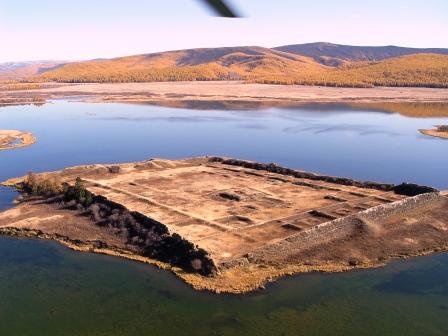 The remote and enclosed Salt Lake system of Uvs Nuur with its high degree of naturalness is of international scientific importance due to its large-scale undisturbed climatic, hydrological and ecological processes and phenomena. Because of the relatively stable past and contemporary pastoral use of the grasslands and the absence of conversion or major human impacts over thousands of years, it constitutes a unique field site for a great variety of subjects, including research into the ongoing development of Uvs Nuur and other smaller lakes within the basin, and the still intact processes of long-term lake salinisation and eutrophication. In addition to important past and current research efforts on both sides of the border and in recognition of its unique geophysical and biological characteristics, the Uvs Nuur Basin has also been selected as a field site for the International Geosphere-Biosphere Programme (IGPB), a global effort to monitor and understand global change.
The remote and enclosed Salt Lake system of Uvs Nuur with its high degree of naturalness is of international scientific importance due to its large-scale undisturbed climatic, hydrological and ecological processes and phenomena. Because of the relatively stable past and contemporary pastoral use of the grasslands and the absence of conversion or major human impacts over thousands of years, it constitutes a unique field site for a great variety of subjects, including research into the ongoing development of Uvs Nuur and other smaller lakes within the basin, and the still intact processes of long-term lake salinisation and eutrophication. In addition to important past and current research efforts on both sides of the border and in recognition of its unique geophysical and biological characteristics, the Uvs Nuur Basin has also been selected as a field site for the International Geosphere-Biosphere Programme (IGPB), a global effort to monitor and understand global change.
Criterion (x)
 The serial property conserves the most valuable areas representing the much larger Uvs Nuur Basin, across an enormous range of ecosystems and habitats, including along a major altitudinal gradient. The diversity represents the major biomes of Central Asia with a corresponding floral and faunal diversity. There are important areas of different forest types and highly specialized vegetation in high altitudes, tundra systems and dry land ecosystems, including species and communities adapted to saline conditions. The more than 550 higher plants include relict species and a number of plants endemic to Mongolia and the Tuva Republic, with five species endemic to the lake basin. The various ecosystems support a rich faunal diversity, such as the argali sheep, Siberian ibex, Pallas's cat and the aelusive and globally endangered snow leopard. The numerous rodents are of major ecological importance and include two vulnerable jerboa species and gerbil. The many ecological niches are occupied by an impressive density of breeding raptors. The property is also of major importance for waterfowl, as well as a stepping stone in the bird migration between Siberia and wintering ranges in China and South Asia.
The serial property conserves the most valuable areas representing the much larger Uvs Nuur Basin, across an enormous range of ecosystems and habitats, including along a major altitudinal gradient. The diversity represents the major biomes of Central Asia with a corresponding floral and faunal diversity. There are important areas of different forest types and highly specialized vegetation in high altitudes, tundra systems and dry land ecosystems, including species and communities adapted to saline conditions. The more than 550 higher plants include relict species and a number of plants endemic to Mongolia and the Tuva Republic, with five species endemic to the lake basin. The various ecosystems support a rich faunal diversity, such as the argali sheep, Siberian ibex, Pallas's cat and the aelusive and globally endangered snow leopard. The numerous rodents are of major ecological importance and include two vulnerable jerboa species and gerbil. The many ecological niches are occupied by an impressive density of breeding raptors. The property is also of major importance for waterfowl, as well as a stepping stone in the bird migration between Siberia and wintering ranges in China and South Asia.
Status
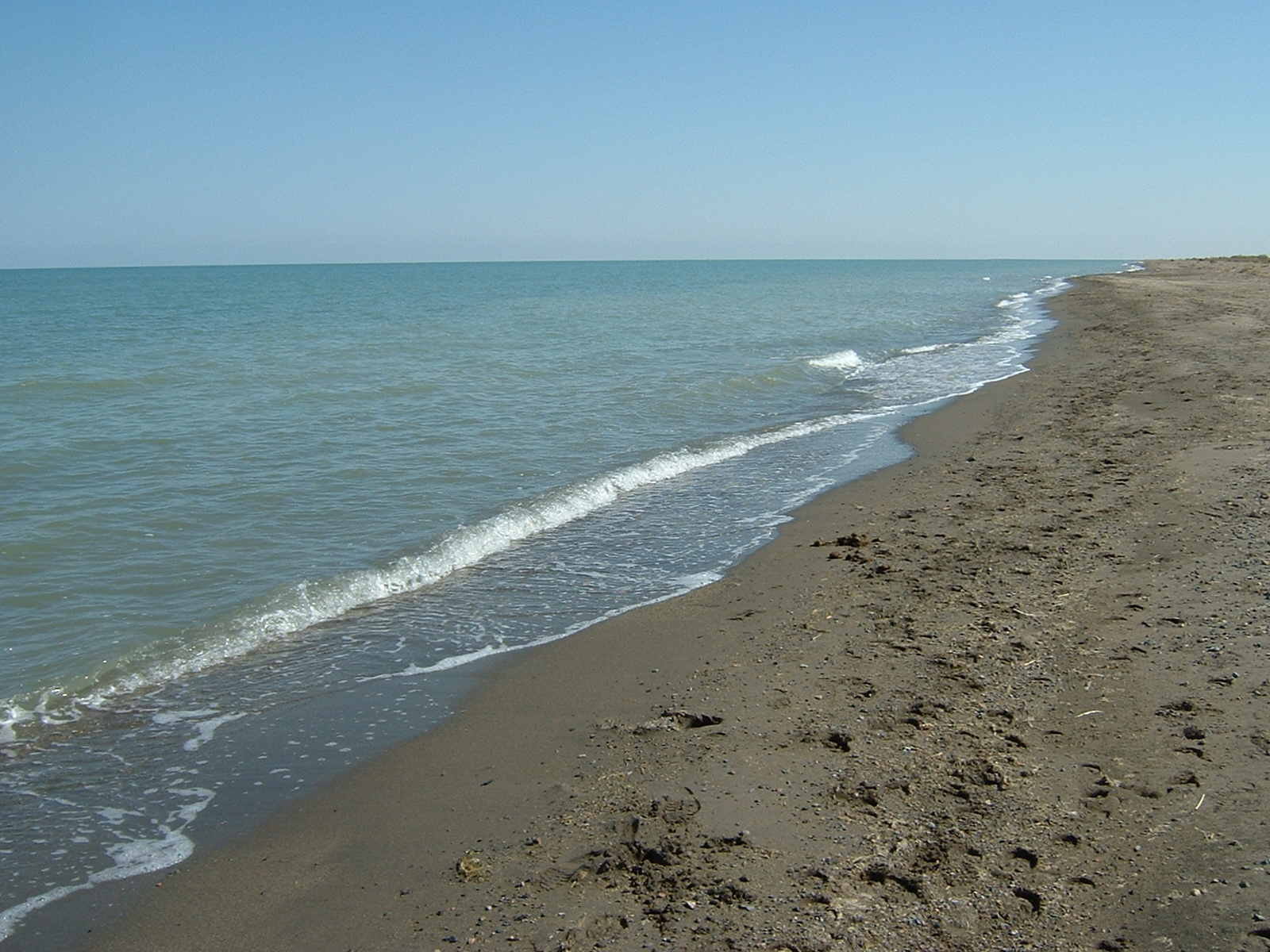 The Uvs Nuur Basin has given high conservation status in both the countries by the national laws, in Mongolia; it is protected by the Laws on particular protected Areas (1994) and Buffer Zones (1998) and in the Russian Federation by the Federal Law on special Protected Areas (1995). The Mongolian Tes River component is also included in this. The property also includes some traditionally sacred mountains, lakes, rivers, and other landscape features. The site showcases the perfect model for cooperation among government, scientific and non-governmental institutions and cooperation in conserving a shared ecosystem between two countries (UNESCO whc.unesco.org). The ministries and the protected area administration have completed various agreements for cooperation and joint management planning. The government has assigned some permanent border protection staff on both sides of the border, which serves to protect the site. The conservation is also supported by environmental education and information activities further (UNESCO whc.unesco.org).
The IUCN outlook declares that the site has "low threats." The site is geographically isolated, it has climate extremes, and there is significantly less water flow, making it insignificant for agriculture. Because of being isolated from the urban population, there is minor human impact, and no industries have been set up in both countries (IUCN World Heritage Outlook 2020). The property facing significant issues is illegal logging, forest fire, pest damage logging, grazing, wind erosion, and global warming. The grasslands of the property changed into bare lands, and the glaciers got decreased and turned into water bodies (Jamsran et al. 2019). IUCN World Heritage Outlook report of 2020 also reports climate change to be a big issue, and other than that, construction of roads and railroads are potential threats to the property (IUCN World Heritage Outlook). The reason for climate change is probably because of the reduction in forest cover. In the study conducted by Jamsran et al. (2019), it was found that in 1995 the forest land area was 1888.48 km2. In the first decade during 1995-2004, the forest cover decreased by 301.36 km2, and in the second decade during 2004–2015 the forest cover reduced to 155.81 km2 (Jamsran et al. 2019).
For the last two decades, The Uvs Nuur Basin is facing negative impacts from global warming, drought, wind erosion, and land degradation. It is suggested that to reduce these negative impacts on the property, several measures like regulating animal husbandry and logging activities and preventing forest fires are needed. promoting ecological tourism will provide economic contributions and economic support to the property’s protection. (Jamsran et al. 2019).
The Uvs Nuur Basin has given high conservation status in both the countries by the national laws, in Mongolia; it is protected by the Laws on particular protected Areas (1994) and Buffer Zones (1998) and in the Russian Federation by the Federal Law on special Protected Areas (1995). The Mongolian Tes River component is also included in this. The property also includes some traditionally sacred mountains, lakes, rivers, and other landscape features. The site showcases the perfect model for cooperation among government, scientific and non-governmental institutions and cooperation in conserving a shared ecosystem between two countries (UNESCO whc.unesco.org). The ministries and the protected area administration have completed various agreements for cooperation and joint management planning. The government has assigned some permanent border protection staff on both sides of the border, which serves to protect the site. The conservation is also supported by environmental education and information activities further (UNESCO whc.unesco.org).
The IUCN outlook declares that the site has "low threats." The site is geographically isolated, it has climate extremes, and there is significantly less water flow, making it insignificant for agriculture. Because of being isolated from the urban population, there is minor human impact, and no industries have been set up in both countries (IUCN World Heritage Outlook 2020). The property facing significant issues is illegal logging, forest fire, pest damage logging, grazing, wind erosion, and global warming. The grasslands of the property changed into bare lands, and the glaciers got decreased and turned into water bodies (Jamsran et al. 2019). IUCN World Heritage Outlook report of 2020 also reports climate change to be a big issue, and other than that, construction of roads and railroads are potential threats to the property (IUCN World Heritage Outlook). The reason for climate change is probably because of the reduction in forest cover. In the study conducted by Jamsran et al. (2019), it was found that in 1995 the forest land area was 1888.48 km2. In the first decade during 1995-2004, the forest cover decreased by 301.36 km2, and in the second decade during 2004–2015 the forest cover reduced to 155.81 km2 (Jamsran et al. 2019).
For the last two decades, The Uvs Nuur Basin is facing negative impacts from global warming, drought, wind erosion, and land degradation. It is suggested that to reduce these negative impacts on the property, several measures like regulating animal husbandry and logging activities and preventing forest fires are needed. promoting ecological tourism will provide economic contributions and economic support to the property’s protection. (Jamsran et al. 2019).
